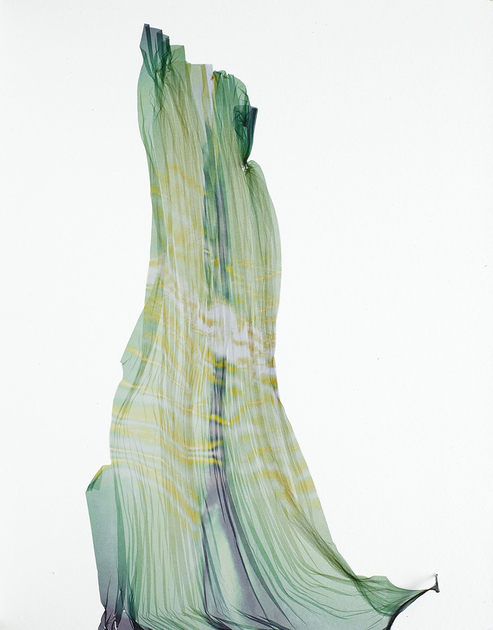-
From Current Issue
-
- Editor’s Letter Fire in the Heart
- Reviews I Gusti Ayu Kadek Murniasih
- Reviews 11th Seoul Mediacity Biennale: “One Escape at a Time”
- Dispatch Networked China
- One on One Monira Al Qadiri on Yukio Mishima
- Essays The rise of independent art spaces in pandemic-era Shanghai
- Features Tuan Andrew Nguyen
- Table of Contents
- Web Exclusives
- Archive
- Subscribe

R
E
V N
E
X
T
“Man goes constantly in fear of himself.” So begins L’érotisme (1957) penned by intellectual and philosopher Georges Bataille (1897–1962). In Bataille’s view, the fundamental existence of humanity is embedded in the primal impulses and urges that we call, in all its aesthetic and philosophical form, eroticism—a problematic condition that constantly chases its own tail. More often than not, we recoil from our own salacious gaze toward top-shelf magazines and we fear public scenes of unfettered ecstasy. We turn away from disgrace. Jiang Pengyi’s latest works, unveiled at Blindspot Gallery in Hong Kong, confronts this tendency.
In the series “The Sun Matched with the Sea” (2017), the artist used instant film to photograph images found in pornography magazines. As limbs, eyes, lips and genitals were slowly exposed, he crushed and creased the film, doctoring the results of development. While Daido Moriyama’s erotic imagery obscures the sex with shadows and patterns of fishnet tights, Jiang’s obfuscations occur at a literal scale. For example, in The Sun Matched with the Sea No.4, fire-white confetti marks cover the surface of the image, veiling all distinguishable features bar the head and shoulders of a woman, her bare breasts and agape mouth in an open expression of pleasure. Jiang’s intervention creates a barrier between the viewer and the image. We desire to see the full picture, but are prevented from doing so.
In this work, the bursts of light seem to mirror the woman’s euphoria, but in others the marks are more violent, marring the paper in bright, explosive scores. Is sex itself violent? Not so, Jiang says. Instead, it is the very imagery and our approach—to cover it up, obscure it or erase it—that renders it vulgar. For example, The Sun Matched with the Sea No. 3 features an anonymous woman’s manicured hand, a multi-strand bracelet of lustrous—probably counterfeit—pearls on her wrist. The hand pulls apart her genitalia, and the top left corner of the frame reveals a leg sheathed in sheer black stockings. The camera’s angle is explicit. However, Jiang has crushed the paper not at the core of the sex, but on the upper flesh of the hand, a neutral, non-erogenous zone for most. The artist’s nod to the human construction of shame and self-loathing comes through prominently here.
Jiang’s final series in the exhibition, “In Some Time” (2015–16), consisted of large-format, archival inkjet prints doused with fluorescent gradients of color. Soft shapes and lines emerge and blur concurrently. Jiang created these sublime visuals by rubbing photographic film against light absorbent fluorescent paper in a darkroom, in an act he calls “painting with light.” Nothing is vulgar here; Jiang’s concern is with the sensual and the erotic in the most mystical sense, and the works are void of images or references to the human body. In pursuit of the theories traced in Bataille’s text, the artist has attempted to transcend the corporeal into the ephemeral, away and above from disgrace.
Jiang Pengyi’s “Away From Disgrace” is on view at Blindspot Gallery, Hong Kong, until May 6, 2017.
Ysabelle Cheung is managing editor at ArtAsiaPacific.
To read more of ArtAsiaPacific’s articles, visit our Digital Library.







